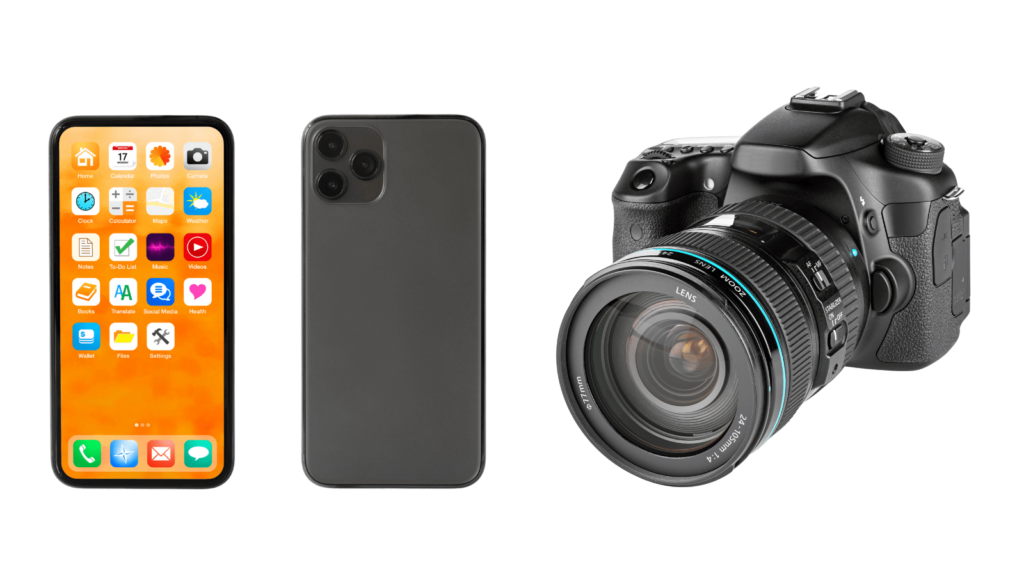A decade ago, the answer would have been simple—dedicated cameras, especially DSLRs and mirrorless systems, were miles ahead of smartphones in image quality, control, and creative flexibility.

But fast-forward to today, and things have changed dramatically. Smartphone cameras are now packed with advanced features, AI-driven processing, and multiple lenses. So the question is: is the gap really closing?
Let’s have a closer look at how far smartphones have come, and whether they can genuinely rival dedicated cameras in different photography scenarios.
Image quality: megapixels vs. sensor size
Smartphones have seen a massive boost in megapixels—some now boast 50MP or even 200MP sensors. However, sensor size still matters more than pixel count. Dedicated cameras have much larger sensors, allowing them to gather more light, capture greater dynamic range, and perform better in low light.
That said, smartphone manufacturers use computational photography to bridge the gap—combining multiple exposures, applying HDR, and enhancing detail through software. In good lighting, the results can be incredibly close to those from an entry-level camera.
Lenses and optical performance
One of the key advantages of dedicated cameras is the ability to swap lenses. Whether you want a wide-angle landscape, a creamy portrait, or a detailed macro shot, cameras give you full control over focal length and aperture.
Smartphones now come with multiple lenses—typically wide, ultra-wide, and telephoto. While they offer versatility, these lenses still have limitations in terms of optical zoom, distortion, and depth of field. Portraits, for instance, often rely on artificial background blur (bokeh) rather than true depth achieved with a wide aperture.
Manual control and creative flexibility
Photography enthusiasts often value the manual controls that cameras provide—adjusting ISO, shutter speed, aperture, and focus precisely to suit the scene. While some smartphones offer a “pro” mode, the controls are usually more limited and less intuitive to use.
Cameras also support external flashes, ND filters, tripods, and other accessories that allow for greater creative experimentation—something smartphones can’t yet replicate fully.
Portability and convenience
Here’s where smartphones shine. They’re always in your pocket, ready to capture a fleeting moment. The convenience of being able to shoot, edit, and share instantly is unbeatable. For many people, this ease outweighs the minor quality differences.
Additionally, AI features like scene recognition, auto-enhancement, and even in-camera editing tools have made smartphones smarter than ever.
Video capabilities
Smartphones are leading the charge when it comes to mobile video. Features like 4K recording, cinematic modes, slow motion, and built-in stabilisation are now standard on flagship models. For social media content, vlogging, and short films, smartphones are more than capable.
Professional video cameras still hold the edge for high-end productions, but the gap is definitely narrowing—especially with tools like external microphones and gimbals that enhance mobile filmmaking.
Who’s it for?
- For everyday users: The smartphone is more than enough. You can take fantastic travel photos, family portraits, and videos without carrying extra gear.
- For aspiring photographers: A dedicated camera offers room to grow, with the ability to learn manual settings and explore different styles.
- For professionals: Cameras still provide the highest quality, reliability, and flexibility needed for commercial work, weddings, or studio shoots.
So, is the gap closing? Yes—in many ways, it already has. Smartphones have come astonishingly close to matching the quality of dedicated cameras in everyday situations. But when it comes to ultimate image quality, creative control, and professional use, dedicated cameras still hold the crown.



